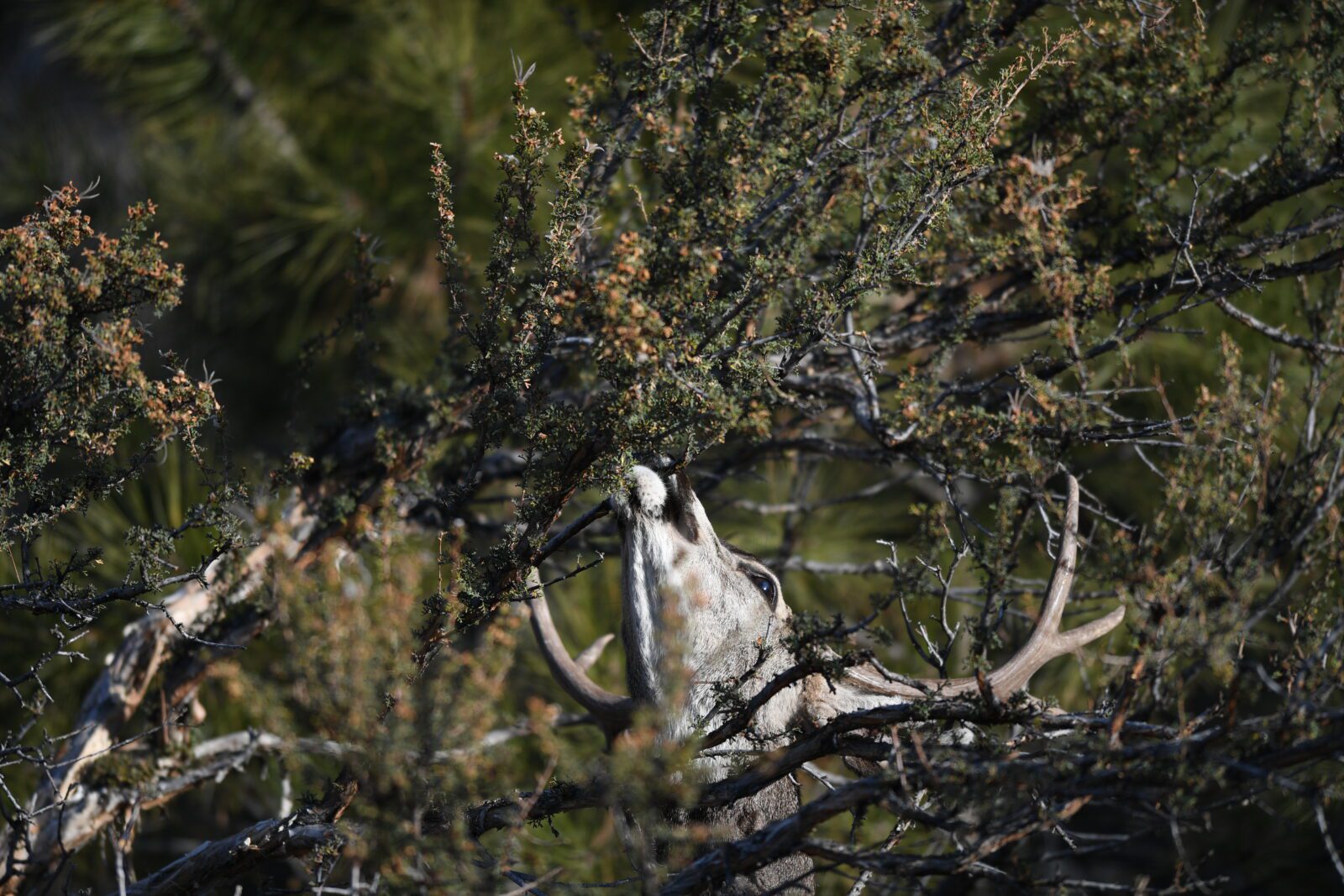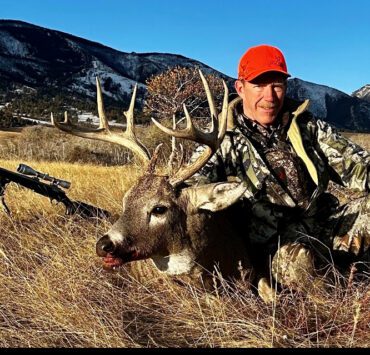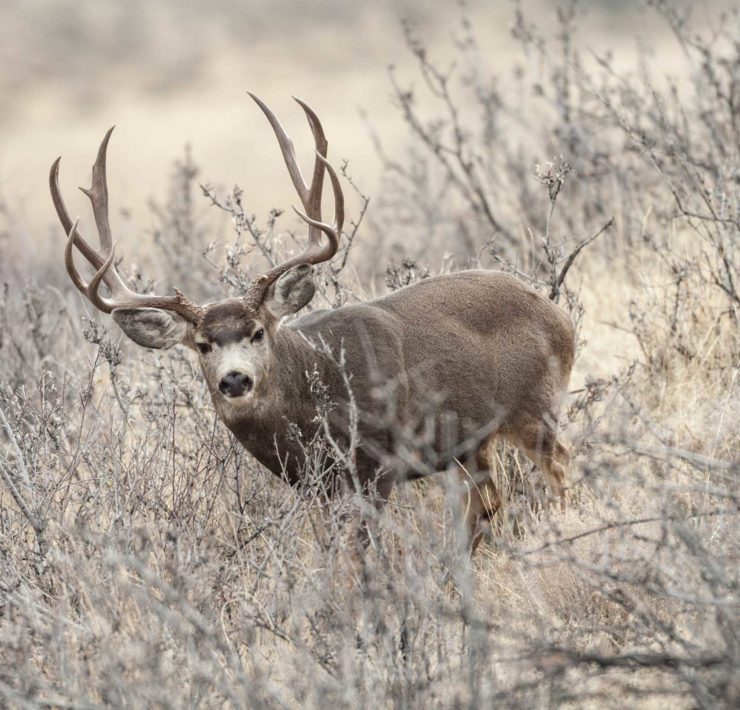Christmas trees and Conservation

One of the biggest types of projects the Mule Deer Foundation takes on are forestry projects. We work across 18 states with multiple federal and state agencies looking at forests of all shapes and sizes trying to work out and implement a sustainable forestry plan that will benefit not only mule deer and black-tailed deer but a wide array of other native wildlife.
I could spend weeks discussing the extent of our forestry work and how it varies based on region, species in greatest need, water availability, predator numbers, and a host of other variables. Our team of 30 biologists out in the mud and the dust everyday would love to do that because every time they lace up their boots, they know they are making bigger healthier mule deer and black-tailed deer herds. They live and breathe these forestry projects and can’t understand why some of our readers (myself included) might not be super inclined to talk about trees all day.
Nevertheless, it is the Christmas season and so we on the communications team thought, why not compromise with our tree obsessed co-workers and give them a nice present they can enjoy reading this week. After all, Junipers, Pinions, Firs, Pines… a lot of these trees are basically Christmas trees already so its fits right in with our holiday trend.
First lets talk Conifers:
What is a Conifer?
A cone bearing seed plant also known as Coniferae. Examples include junipers, pines, hemlocks, redwoods, yews, spruces, cedars, and firs. Basically a conifer is a Christmas tree.
What does MDF do with Conifers?
MDF projects remove conifers that encroach into sagebrush rangelands, improving native grasses, forbs, and shrubs while retaining water on the landscape. Juniper and piñon pines are a natural part of western landscapes; however, over the last century, these conifers have encroached into sagebrush rangelands mainly due to fire suppression. While old growth junipers and piñons provide important hiding habitat for deer and nesting areas for a variety of birds, invading trees are changing the landscape. Soil pH is altered due to needle drop which, coupled with increased shade, prevents growth of native shrubs and grasses that are important for deer.
(That’s crazy… in case you missed it, that means that as some conifers drop their needles ,they can actually change the chemical balance in the soil so no plants grow under the tree that could steal nutrients from it)
In addition, conifer roots suck up substantial amounts of water decreasing soil moisture and outcompeting other plants for this limited resource in the arid West. One way to restore sagebrush habitats to benefit deer, sage grouse, and hundreds of other species is to remove encroaching conifers where they have invaded in recent years, leaving the old growth trees where they belong. This is a tailored prescription for ecosystem health and a labor-intensive process, but the benefits are far reaching. MDF works on public and private lands to cut or masticate invasive conifers and often the trees are “mulched” to provide ground cover and nutrients for soils. After these restoration projects, the grasses, forbs, and shrubs quickly rebound, more water is retained on the landscape, and deer and many other sagebrush dependent species thrive. Some projects also have a commercial aspect for logs or biomass, which helps MDF recover expenses, provides local jobs and economic returns, and returns valuable funding for future habitat projects.
No matter what part of the world you are in, there is always a conifer that needs to be managed. But don’t think of these trees as bad for deer… think about them like something that is really good at thriving and surviving in areas where other plants need some help. The existence of conifers in your hunting area doesn’t make it bad, it is the ratio of conifers to other plant life that determine how mule deer and other critters use the landscape.
What else does MDF do with Christmas trees?
Let’s talk about when there are not enough trees, for example, after a wild fire. Forest, rangeland, and grassland “health” refers to how habitat conditions across the ecosystem function. Habitat degradation—whether from natural events like wildfire and drought or man-made sources like human development and habitat conversion—can reduce habitat function, resulting in poorer health of the landscapes that deer depend on. Habitat restoration projects can help with recovery of healthy conditions and ensure these habitats are functional and resilient. With millions of acres in the West affected by wildfire in recent years, along with continued habitat conversion, these restoration and enhancement projects are more important than ever.
Through our large landscape conservation grants, local chapter support, and partner collaboration, MDF works to restore habitat health through projects like planting shrubs, grasses, and forbs that increase forage for deer and other wildlife. In addition, habitat projects that remove dead timber from burned areas and thinning of forest stands which are overstocked can utilize the value of the logs forest product to complete the work while ensuring that forests are able to recover. We work with the U.S. Forest Service, Bureau of Land Management, state fish and wildlife agencies, and private landowners to treat tens of thousands of acres each year of needed habitat restoration. These projects help play a part in the restoration of our western landscapes— and provide deer the resources they need to thrive.
Let’s end on a high note:
Finally, let’s wrap up the Christmas Tree Special Conservation Edition of our blog with a story from right here in Utah where we were able to find the exact right amount of trees for an area: The Uinta-Wasatch-Cache National Forest.
For this habitat project, the Mule Deer Foundation worked with the U.S. Forest Service to clear up 76 acres of unusable timber from what the Utah Division of Wildlife identified as a key mule deer traffic area. Removal of conifers from aspen stands in this area helped generate cover and forage for deer.
In the past, the Forest Service has used timber sale contractors to do projects like this. In a timber sale contract, the contractor will come in and cut all the timber from an area bundle it up and sell it. The problem with using a timber sale contractor is the date the work gets done cannot be specified. Sometimes the Forest Service waits up to five years for the project to be complete while wildlife and humans suffer.
Our MDF Habitat Project Manager Tyler Massy described the project,
“With the Habitat and Fire risk urgency involved with this project, five years is too long for us to wait. Instead the US Forest service chose to work with the Mule Deer Foundation. The Mule Deer Foundation hired a contractor to clear, cut, and stack the timber. Project start through completion was less than 2.5 weeks.”
Because this project cleared cramped, fallen, and less valuable wood while leaving high value habitat creating trees like aspen. Local Law enforcement staff are seeing more deer using the area for summertime browse.
Timber management projects like this are critical to putting more deer on the landscape. By removing old less valuable timber from aspen stands, clearing fallen and dead timber, we open the canopy to promote nutritious browse and ease of movement. This space allows plants like Aspen, native grasses, and forbs to grow. Mule Deer use these native calorie sources to build their strength and energy reserves in preparation for long winter months.
Thanks for reading or short letter on Christmas trees and all that the Mule Deer Foundation and Blacktail Deer Foundation are doing to keep them healthy and in the right areas to promote our deeper herds and have a Merry Christmas!
Merry Christmas!
As always, good luck this winter and remember to send any success pictures or stories from the field to [email protected] and you could be featured on our website or in our magazine. If this article or any of our articles have helped you become a better hunter or conservation steward, consider becoming a member of the Mule Deer Foundation or the Blacktail Deer Foundation or both for only $35 dollars each a year. Click here to join: https://muledeer.org/product-category/membership/ or https://www.blacktaildeer.org/
Trevor Hubbs

Trevor is the Communications Manager and Editor for the Mule Deer Foundation and Blacktail Deer Foundation. He grew up hunting and fishing the Ozark Mountains for quail, ducks, and bucks. Now he ventures west for mule deer as often as possible.



